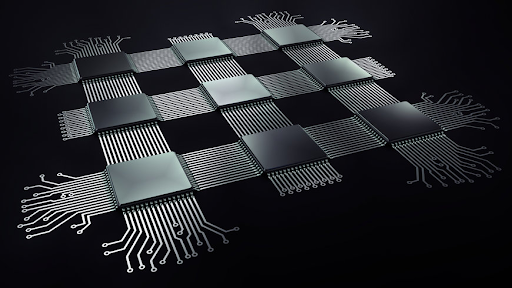
In a number of applications where speed, latency, and light detection are critical, silicon has reached the limits of its capabilities. Global shipments of silicon between 2021 and 2025 are expected to total 17,600 million square inches, according to Statista. It is clear from this report that Moore's law has the potential to last at least until 2025. However, it is also critical to identify a suitable silicon substitute.
Future iterations of the machine will be able to learn from and adapt to its environment thanks to technologies like artificial intelligence. Because of this, more potent and flexible computational processes are required. It is more probable that the production of chips will usher in a new computing revolution. The following are a few possible silicon chip substitutes that could improve computing performance.
Expanding Beyond Silicon as Moore's Law Breaks Through Barriers
University of North Texas, professor Anupama Kaul is setting out on a historic quest to unleash the power of nanomaterials and transform the electronics sector in the cutting-edge field of high-performance computing. Kaul is actively investigating silicon substitutes, tackling issues of national security and inefficiencies with tungsten diselenide as a focus.
Energy inefficiency in the transistor's switching states is currently posing a serious threat to the trillion-dollar silicon electronics sector. According to Kaul, our gadgets, like laptops and iPhones, dissipate a lot of heat. The trillion-dollar electronics industry is powered by silicon, but Moore's Law's limits on transistors scaling and energy inefficiency have put silicon at a critical crossroads.

Kaul's proficiency with two-dimensional layered materials (2DLMs) is evident in this situation. By integrating these materials into chips, she sees a future of computational devices with improved performance and reduced energy consumption. These materials are unique because of their nearly flawless atomic interfaces, which permit electrons to move freely even in nanoscale dimensions without experiencing energy loss or obstructions.
Alternative Materials
As previously observed, even during the early stages of the development of integrated circuit designs, there were always alternatives to silicon available to engineers and inventors. The tech industry, which spent decades and billions of dollars refining the process before reaching a consensus on silicon, is not in a rush to abandon the process and begin the cycle anew with a different material. Whether used in conjunction with silicon or separately, the search continues for an integrated circuit (IC) that is more compact, quicker, more affordable, and, most importantly, uses less power. Researchers are looking into a number of materials, including black phosphorus, graphene, boron nitride nanosheets, and gallium nitride, as potential alternatives to silicon or methods to improve it to boost its transistor-bearing capacity. They are known as 2-D materials because they are thin, flat sheets that are only one or two atoms thick.

The Future Of Semiconductors
Advanced III-V (gallium-nitride) semiconductor electronics, capable of transforming power into high-voltage transmission and vice versa, will serve as the foundation of our future electrical grid. Innovations in III-V materials, such as bismuthides and antimonides, are opening up new applications in medicine, the military, and other civilian fields. They are also opening up new avenues for communication. The exploration of earth-abundant element combinations to create new semiconductors for low-cost, high-efficiency solar cells is ongoing.
And silicon, that old reliable? Its failure to efficiently harness light does not condemn it to the trash heap of history. By developing "silicon photonics," researchers are revitalizing silicon so that it can handle light more effectively than just moving electrons back and forth. One way is to mix tiny amounts of tin, an additional group IV element, with silicon or germanium. As a result, they have altered properties that improve their ability to both emit and absorb light. That tin inclusion turns out to be a challenging task, similar to many other problems in the field of material science.
Conclusion
As we conclude our semiconductor future study, moving past silicon is possible and necessary. Gallium nitride, graphene, and tungsten diselenide are becoming more popular as the tech industry seeks stronger, more flexible materials. These new materials could revolutionize energy efficiency and processing power. Silicon's photonics evolution shows its versatility. This exciting stage of semiconductor development aims to replace outdated technology and reinvent and improve our electronic future by fusing the two.



